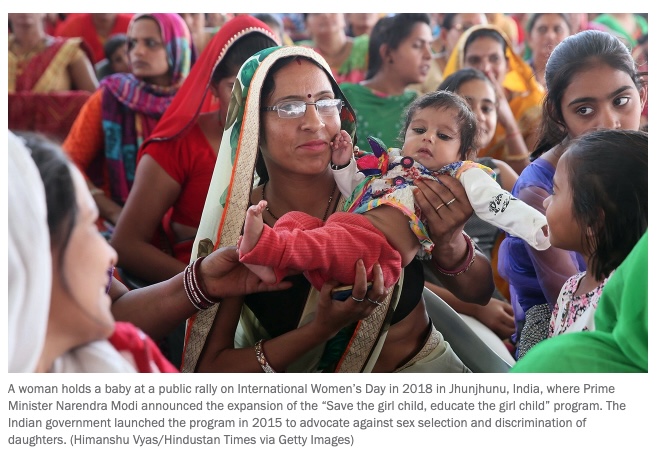WASHINGTON, D.C. August 23, 2022 (Pew Research): India’s artificially wide ratio of baby boys to baby girls – which arose in the 1970s from the use of prenatal diagnostic technology to facilitate sex-selective abortions – now appears to be narrowing, according to a Pew Research Center analysis of newly released data from India’s National Family Health Survey (NFHS). The new data suggests that Indian families are becoming less likely to use abortions to ensure the birth of sons rather than daughters. This follows years of government efforts to curb sex selection – including a ban on prenatal sex tests and a massive advertising campaign urging parents to “save the girl child” – and coincides with broader social changes such as rising education and wealth.
Naturally, boys modestly outnumber girls at birth, at a ratio of approximately 105 male babies for every 100 female babies. That was the ratio in India in the 1950s and 1960s, before prenatal sex tests became available across the country. Abortion was legalized in the country in 1971. Once prenatal testing allowed Indian families to learn the sex of a fetus during pregnancy, sex selection took off. The sex ratio at birth widened rapidly from about 105 boys per 100 girls before 1970, to 108 boys per 100 girls in the early 1980s; it reached 110 in the 1990s and stubbornly remained at that level for roughly 20 years. Even if India’s sex ratio at birth continues to normalize, the large number of girls “missing” (“missing” refers to an estimate of how many more female births would have occurred during this time if there were no female-selective abortions.) from its population could continue to have profound consequences on Indian society for decades to come. Hindus make up 80% of India’s population but accounted for an estimated 87%, or approximately 7.8 million, of the females “missing” due to sex-selective abortions.
To read the report, click here: https://www.pewresearch.org/religion/2022/08/23/indias-sex-ratio-at-birth-begins-to-normalize/
A daily summary of world news for Hindus and non-Hindus alike

